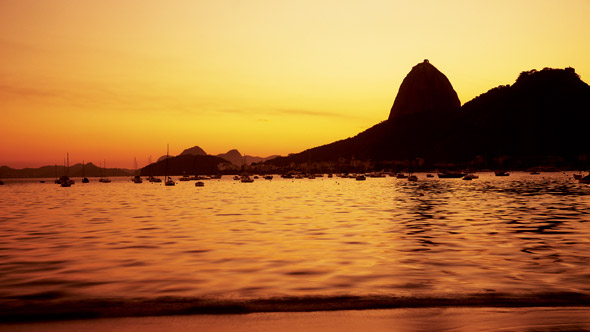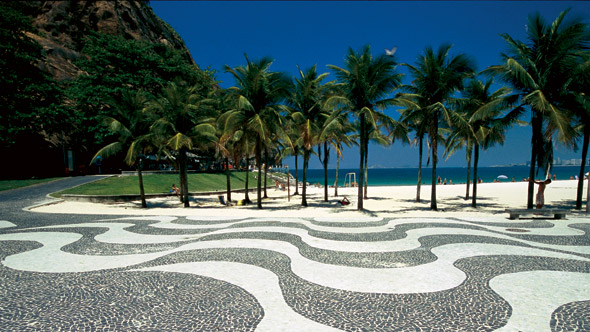Tourism Sector in Brazil 2012
Tourism in Brazil is a growing sector and key to the economy of several regions of the country. With the upcoming World Cup and Olympic Games, respectively in 2014 and 2016, economic impacts may reach $183.2 billion by 2019.

There’s no doubt that Brazil is booming: the GDP is rising steadily, the Brazilian Real is strong, crime is at an all time low, the country´s economy continues to grow in the midst of an international financial crises and if all that isn´t good enough, two of the world´s biggest sporting events: the World Cup and the Olympics are just around the corner, in 2014 and 2016 respectively. So does this mean that Brazil will finally shed its dangerous, drug-dealing, gun-toting image personified in the 2002 movie City of God and reach its goal of becoming the third largest tourist market in the world, or will the laws of physics step in and make what goes up eventually come down?
The economic impacts resulting from the implementation of the World Cup may reach $183.2 billion by 2019, of which R$47.5 billion (26%) are direct and $135.7 billion (74%) indirect.
As published on the Brazilian government´s own website (www.brasil.gov.br) in March this year “all the research on the future of tourism in Brazil is very positive” and Brazil is working “toward the goal of becoming the world’s third largest tourism economy by 2022”. The “statistics are encouraging” with the World Tourism Organization´s 2011 annual report showing that the Americas region “recorded the largest increase in receipts in 2011 (+6%)” and the World Travel and Tourism Council´s most recent study revealing that tourism should rise from 4.5% to 9.5% of Brazil´s total GBP by 2022.
According to Marcelo Pedroso, Director of International Markets Embratur (The Brazilian Institute of Tourism), massive investment as part of the government´s Plano Aquarela (Watercolour Plan) 2020 is being made in order to promote Brazil and get the country ready to host these events, including $134 million earmarked exclusively for promotion and $33 billion allocated to improve infrastructure, but whilst this might seem like enormous expenditure for less than 50 days of competition (one month of World Cup matches and 17 days of Olympic events) it´s nothing in comparison to the fact that “the economic impacts resulting from the implementation of the World Cup may reach $183.2 billion by 2019, of which R$47.5 billion (26%) are direct and $135.7 billion (74%) indirect”, and that in addition to generating 700, 000 jobs, “the exposure generated by the Cup will cause an increase in the flow of tourists in the years after the event with the Cup also bringing tangible benefits to tourism, such as the increased use of the country´s tourism potential, dissemination of regional attractions and a jump in quality of services”. One of Embratur’s goals is to get 25% of those who come for the World Cup and the Olympic games to see more of the country.

Brazil has so much to offer that it´s impossible to experience everything in just one visit even on a packed 3-week itinerary, let alone with World Cup matches or Olympic events added to the agenda. A stock standard highlights package will generally include Rio and Salvador with Ilha Grande or Morro de Sao Paulo plus Iguaçu falls, meaning that four amazing and completely different new places can be experienced in a short space of time but this doesn´t even scratch the surface of what Brazil has to offer.
What about the Pantanal with its distinctive capybaras, giant anteaters, plethora of birds and the occasional jaguar not to mention river diving, lake floating and cave exploration or the Amazon offering jungle trekking, giant trees in pristine forests and its vast river system. Or Florianopolis’s chic surf culture and nightlife or hiking in Chapada Diamantina or the Northeast with its surreal sand dunes and vibrant African culture, or the pristine island of Fernando de Noronha.
Without any hint of a cliché the possibilities are truly endless which is why the World Cup and Olympic games aren’t being viewed as the culmination of tourism in Brazil but, on the contrary, as a new beginning: a way of showcasing Brazil to the rest of the world in order to gain a steady increase in visitors after these events have finished.
Alain Baldacci, President of SINDEPAT (Integrated System of Amusement Parks and Tourist Attractions) reiterated this fact in a recent interview: “Brazil is a very unique country, so what we are going to do is boost other countries´ awareness of Brazil. After people get to know it, we believe that it will leave a lasting impression on them, making them want to come back. This is how we are going to make tourism sustainable.”
But simply investing in publicity and physical infrastructure, such as airports and roads, to showcase Brazil’s breathtaking natural beauty may not necessarily be enough to give foreign tourists the type of experience they’ll be expecting. Continue reading…